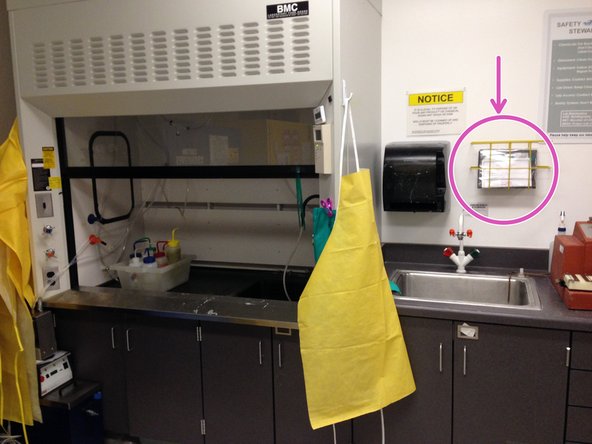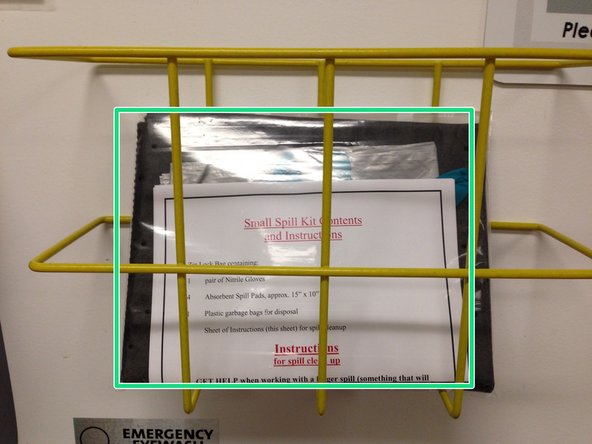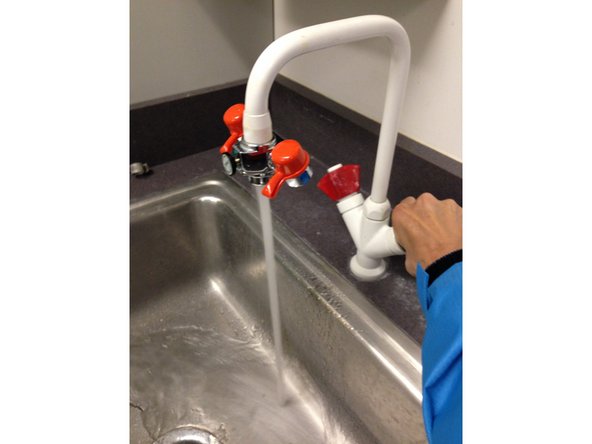Introduction
This guide takes you through precautions and actions in case of spills or broken glass.
-
-
Memorize location of eye wash in case you need to find it with your eyes closed.
-
Locate spill kit before beginning work.
-
Make sure there is a clear path to fire exit.
-
-
-
Use designated containers
-
Ensure no broken glass remains in the area.
-
-
-
Minor spills are < 1 Liter and have hazard ratings of 4 or 5 (i.e., low hazard).
-
Alert people in the immediate area of the spill.
-
If flammable, turn off all sources of ignition (e.g., close fume hood).
-
Avoid breathing vapors, fumes, or dust from material.
-
Confine spill using spill kit.
-
Fully cover with proper absorbent from spill kit, working from outside inward.
-
Clean spill area.
-
For hazardous spills, dispose of all absorbents, residue, material into hazardous waste bag (minimum 4 mil thickness), double-bagged.
-
-
-
Major spills involve hazardous materials of volume > 1 L or highly hazardous materials (rating 1 , 2 or 3).
-
Evacuate spill area.
-
Call 911 and Environmental Health and Safety at 756-6661.
-
Stay in area, away from spill, to consult with emergency personnel.
-
-
-
Inhalation: Evacuate victim to safe area with fresh air; loosen tight clothing.
-
Seek medical attention: call 911
-
WARNING: Mouth-to-mouth resuscitation may be hazardous if the victim inhaled toxins.
-
Skin contact: Immediately flush with water for at least 15 minutes while removing contaminated clothing.
-
Eye contact :Immediately flush eyeballs and lids with eyewash for at least 15 minutes.
-
Cuts: Stop bleeding with direct pressure. Use first aid kit as needed.
-
For non-life threatening emergencies, students can seek medical attention at Health Center, MTThF 8-4:30PM; W 9-4 PM.
-
Report accident to Faculty Safety Facilitator lvanasup@calpoly.edu.
-
-
-
Turn off ignition, oxygen and heat sources if you can do so safely without endangering yourself. Do NOT use extinguisher--this is for emergency personnel.
-
Evacuate yourself and others from the area.
-
Close doors to affected area.
-
From a safe but nearby location, call 911
-
Inform dispatch that you have a chemical emergency (and/or medical).
-
You are now ready to move on to A3-How to plan for chemical storage and disposal.
You are now ready to move on to A3-How to plan for chemical storage and disposal.
Cancel: I did not complete this guide.
164 other people completed this guide.








